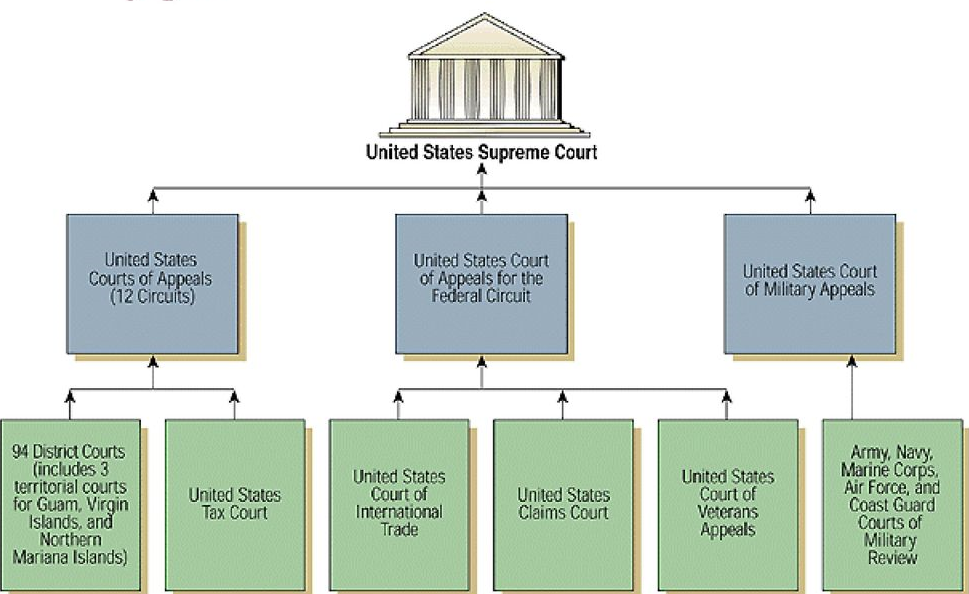The American Court System
The United States has a unique court system in that it is divided between a federal system covering the whole country and independent systems in each state and US territory. The systems can cover the same grounds in criminal, civil and administrative law. For instance, there are both federal and state laws against murder, lawsuits can be brought by the same people against the same people in both state and federal court and both the federal and state government regulate things like securities and the environment. The running of these two parallel systems simultaneously on the state and federal levels is known as “federalism.”
The federal court system was established by Article 3 of the Constitution, but new judges and courts are established by Congress and the President. State court systems are established by state law or state constitution.
The details of the structure of the federal court system was the first order of business of the first US Congress, which passed the Judiciary Act of 1789 as Senate Bill 1. That Act created the federal judiciary system still in use today. The original federal judicial system consisted of a Supreme Court with six Justices, three appeals courts, each presided over by two Supreme Court justices and a district court judge and 13 trial courts, each presided over by a district judge.
Over the years, the numbers of courts and judges have changed with the growth and shifting of populations. Today, the federal judicial system consists of the Supreme Court with nine justices, thirteen circuit courts of appeal (11 geographic circuit courts, the D.C. Circuit court and the Federal Circuit) and 94 district courts. There are also a number of specialty courts of limited jurisdiction.[3]
The 94 district courts are scattered across the country, with each state and territory having between one and four districts. In districts with large populations, one district court may have offices, courtrooms and judges in multiple locations. For instance, the Northern District of Ohio court has locations in Cleveland, Toledo, Akron and Youngstown.[4] Each federal district also has a bankruptcy court.
Congress also created several “Article I,” or legislative courts, that do not have full judicial power. These include the Court of Appeals for Veterans Claims, the Court of Appeals for the Armed Forces and Tax Court.[5] There are also military courts and tribunals that are not part of the federal court system under Article III.

https://lawshelf.com/videocoursesmoduleview/the-american-court-system-module-1-of-5